AS04 drives superior cross-protective antibody response by increased NOTCH signaling of dendritic cells and proliferation of memory B cells
- PMID: 40808939
- PMCID: PMC12344523
- DOI: 10.3389/fimmu.2025.1623405
AS04 drives superior cross-protective antibody response by increased NOTCH signaling of dendritic cells and proliferation of memory B cells
Abstract
Introduction: The Gardasil-4® vaccine targets HPV types 6, 11, 16 and 18 and is formulated with amorphous alum. Cervarix® targets HPV types 16 and 18 using AS04 (Al(OH)3 + TLR4 agonist MPL) to enhance immune response. Cervarix elicits higher cross-protection against other high-risk HPV types, likely mediated by AS04.
Methods: To investigate mechanisms of cross-neutralizing potential, six monozygotic twins (12 females aged 9-13 years) were vaccinated with either Cervarix or Gardasil-4 (2 doses, 6 months apart). Serum neutralizing antibody titers against HPV 6,16,18,31,33,45,52, and 58 were assessed pre-vaccination and 7 days post-second dose. Multi-omic single cell RNA and ATAC sequencing of PBMCs was performed at the latter timepoint.
Results: Cervarix generated higher cross-neutralizing antibody titers than Gardasil-4. Higher frequencies of dendritic cells and memory B cells were observed. Gene Set Enrichment Analysis (GSEA) indicated enhanced pathways related to NOTCH2 signaling in DCs and cell cycling/RNA translation in B cells, correlating positively with cross-neutralizing antibody titers. Increased chromatin accessability in genes related to NOTCH signaling in cDC1 was also observed. Cervarix-vaccinated subjects showed increased DC-to-memory B signaling, through upregulation of NOTCH ligands. Engagement of NOTCH was associated to BCL2 expression in memory B cells, supporting an anti-apoptotic state.
Conclusion: Increased DC signaling, including NOTCH, through AS04 in Cervarix supports cell survival and sustained RNA translation in memory B cells, 7 days post-vaccination. This may enhance adaptive immune cell maturation, providing a mechanism that can lead to improved cross-reactivity.
Keywords: HPV vaccine; adjuvant; dendritic cells; immune response; memory B cell.
Copyright © 2025 D’Onofrio, Santana, Pauwels, Waerlop, Willems, De Boever, Müller, Sehr, Waterboer, Leroux-Roels, Sharma, Sékaly and Leroux-Roels.
Conflict of interest statement
GL-R provided consulting services and received consulting fees from Virometix, Osivax, ICON Genetics, Sumitomo Pharma, Curevo, and Minervax. IL-R declares that her institution received funding from GSK, Icosavax, Virometix, Janssen Vaccines, Curevac, Moderna, Osivax, MSD, ICON Genetics, and OSE Immunotherapeutics for other vaccine trials; and from Janssen Vaccines and MSD for consulting services. The remaining authors declare that the research was conducted in the absence of any commercial or financial relationships that could be construed as a potential conflict of interest. The author(s) declared that they were an editorial board member of Frontiers, at the time of submission. This had no impact on the peer review process and the final decision.
Figures
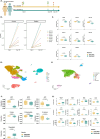
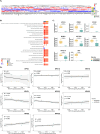
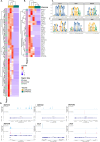
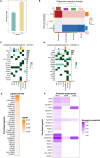
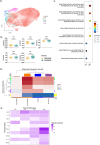
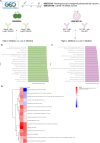
Similar articles
-
Human papillomavirus (HPV) type 16 and type 18 antibody concentrations after a single dose of bivalent HPV vaccine in girls aged 9-14 years compared with three doses of quadrivalent HPV vaccine in women aged 18-25 years in Costa Rica (PRIMAVERA): a non-randomised, open-label, immunobridging, non-inferiority trial.Lancet Infect Dis. 2025 Jul 16:S1473-3099(25)00284-1. doi: 10.1016/S1473-3099(25)00284-1. Online ahead of print. Lancet Infect Dis. 2025. PMID: 40683285
-
Investigating factors affecting the effectiveness of Gardasil 4, Cervarix, and Gardasil 9 vaccines considering the WHO regions in females: A systematic review.Cancer Epidemiol. 2025 Apr;95:102759. doi: 10.1016/j.canep.2025.102759. Epub 2025 Feb 5. Cancer Epidemiol. 2025. PMID: 39914284
-
Prescription of Controlled Substances: Benefits and Risks.2025 Jul 6. In: StatPearls [Internet]. Treasure Island (FL): StatPearls Publishing; 2025 Jan–. 2025 Jul 6. In: StatPearls [Internet]. Treasure Island (FL): StatPearls Publishing; 2025 Jan–. PMID: 30726003 Free Books & Documents.
-
The effect of pertussis vaccination in pregnancy on the immunogenicity of acellular or whole-cell pertussis vaccination in Gambian infants (GaPS): a single-centre, randomised, controlled, double-blind, phase 4 trial.Lancet Infect Dis. 2025 Aug;25(8):909-924. doi: 10.1016/S1473-3099(25)00072-6. Epub 2025 Mar 25. Lancet Infect Dis. 2025. PMID: 40154521 Clinical Trial.
-
Immunogenicity and seroefficacy of pneumococcal conjugate vaccines: a systematic review and network meta-analysis.Health Technol Assess. 2024 Jul;28(34):1-109. doi: 10.3310/YWHA3079. Health Technol Assess. 2024. PMID: 39046101 Free PMC article.
References
LinkOut - more resources
Full Text Sources
Miscellaneous

